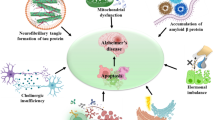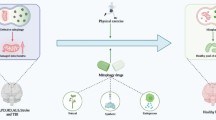Abstract
Glutamate receptor ionotropic NMDA 2B (GluN2B) plays an essential role in calcium overload during excitotoxicity. Reverse-phase nano-liquid chromatography-tandem mass spectrometry has revealed an interaction between GluN2B and HECT domain E3 ubiquitin protein ligase 4 (HECTD4), an E3 ubiquitin ligase highly expressed in the brain. As a potential substrate for HECTD4, mucosa-associated lymphoid tissue lymphoma translocation protein 1 (MALT1) acts as a scaffold with hydrolysis activity. This study explores the relationship between HECTD4, GluN2B, and MALT1, focusing on their role in brain injury in ischemic stroke. Rats were subjected to 2 h-ischemia followed by 24-h reperfusion to establish an ischemic stroke model. We observed the downregulation of HECTD4 and the upregulation of MALT1. Additionally, an increased GluN2B phosphorylation was concomitant with weakened interactions between HECTD4 and GluN2B, followed by decreased striatal-enriched protein phosphatase (STEP61). Knockdown of HECTD4 exacerbated hypoxia- or NMDA-induced injury in nerve cells coincident with a decrease in GluN2B and MALT1 ubiquitination, and an increase in GluN2B phosphorylation as well as an increase in intracellular calcium level, which were counteracted by MALT1 siRNA. Blockage of MALT1 with its inhibitor or siRNA reduced STEP61 degradation, accompanied by a decrease in GluN2B phosphorylation, intracellular calcium concentration, and brain cell injury, which were reversed by overexpression of MALT1. Based on these observations, we conclude that the downregulation of HECTD4 in ischemic stroke rat brain accounts for calcium overload and brain injury due to activating GluN2B directly and indirectly through a mechanism involving the reduced ubiquitination of GluN2B and MALT1, respectively.








Similar content being viewed by others
Data Availability
Not applicable.
References
Marques BL, Carvalho GA, Freitas EMM, Chiareli RA, Barbosa TG, Di Araújo AGP et al (2019) The role of neurogenesis in neurorepair after ischemic stroke. Semin Cell Dev Biol 95:98–110. https://doi.org/10.1016/j.semcdb.2018.12.003
Wu QJ, Tymianski M (2018) Targeting NMDA receptors in stroke: new hope in neuroprotection. Mol Brain 11(1):15. https://doi.org/10.1186/s13041-018-0357-8
Zhu S, Stein RA, Yoshioka C, Lee CH, Goehring A, McHaourab HS et al (2016) Mechanism of NMDA receptor inhibition and activation. Cell 165(3):704–714. https://doi.org/10.1016/j.cell.2016.03.028
Weilinger NL, Lohman AW, Rakai BD, Ma EM, Bialecki J, Maslieieva V et al (2016) Metabotropic NMDA receptor signaling couples Src family kinases to pannexin-1 during excitotoxicity. Nat Neurosci 19(3):432–442. https://doi.org/10.1038/nn.4236
Lai TW, Zhang S, Wang YT (2014) Excitotoxicity and stroke: identifying novel targets for neuroprotection. Prog Neurobiol 115:157–188. https://doi.org/10.1016/j.pneurobio.2013.11.006
Ge Y, Chen W, Axerio-Cilies P, Wang YT (2020) NMDARs in cell survival and death: implications in stroke pathogenesis and treatment. Trends Mol Med 26(6):533–551. https://doi.org/10.1016/j.molmed.2020.03.001
Hardingham GE, Bading H (2010) Synaptic versus extrasynaptic NMDA receptor signalling: implications for neurodegenerative disorders. Nat Rev Neurosci 11(10):682–696. https://doi.org/10.1038/nrn2911
Lai TW, Shyu WC, Wang YT (2011) Stroke intervention pathways: NMDA receptors and beyond. Trends Mol Med 17(5):266–275. https://doi.org/10.1016/j.molmed.2010.12.008
Zhou L, Li F, Xu HB, Luo CX, Wu HY, Zhu MM et al (2010) Treatment of cerebral ischemia by disrupting ischemia-induced interaction of nNOS with PSD-95. Nat Med 16(12):1439–1443. https://doi.org/10.1038/nm.2245
Tu W, Xu X, Peng L, Zhong X, Zhang W, Soundarapandian MM et al (2010) DAPK1 interaction with NMDA receptor NR2B subunits mediates brain damage in stroke. Cell 140(2):222–234. https://doi.org/10.1016/j.cell.2009.12.055
Ning K, Pei L, Liao M, Liu B, Zhang Y, Jiang W et al (2004) Dual neuroprotective signaling mediated by downregulating two distinct phosphatase activities of PTEN. J Neurosci 24(16):4052–4060. https://doi.org/10.1523/jneurosci.5449-03.2004
Pan Z, Zhao R, Li B, Qi Y, Qiu W, Guo Q et al (2022) EWSR1-induced circNEIL3 promotes glioma progression and exosome-mediated macrophage immunosuppressive polarization via stabilizing IGF2BP3. Mol Cancer 21(1):16. https://doi.org/10.1186/s12943-021-01485-6
Hamanaka K, Miyake N, Mizuguchi T, Miyatake S, Uchiyama Y, Tsuchida N et al (2022) Large-scale discovery of novel neurodevelopmental disorder-related genes through a unified analysis of single-nucleotide and copy number variants. Genome Med 14(1):40. https://doi.org/10.1186/s13073-022-01042-w
Vatapalli R, Sagar V, Rodriguez Y, Zhao JC, Unno K, Pamarthy S et al (2020) Histone methyltransferase DOT1L coordinates AR and MYC stability in prostate cancer. Nat Commun 11(1):4153. https://doi.org/10.1038/s41467-020-18013-7
Zhang ZY, Bai HH, Guo Z, Li HL, Diao XT, Zhang TY et al. (2020) Ubiquitination and functional modification of GluN2B subunit-containing NMDA receptors by Cbl-b in the spinal cord dorsal horn. Sci Signal 13(638). https://doi.org/10.1126/scisignal.aaw1519
Jaworski M, Thome M (2016) The paracaspase MALT1: biological function and potential for therapeutic inhibition. Cell Mol Life Sci 73(3):459–473. https://doi.org/10.1007/s00018-015-2059-z
Zhang YY, Peng J, Luo XJ (2022) Post-translational modification of MALT1 and its role in B cell- and T cell-related diseases. Biochem Pharmacol 198:114977. https://doi.org/10.1016/j.bcp.2022.114977
Gehring T, Erdmann T, Rahm M, Graß C, Flatley A, O’Neill TJ et al (2019) MALT1 phosphorylation controls activation of T lymphocytes and survival of ABC-DLBCL Tumor Cells. Cell Rep 29(4):873-888.e810. https://doi.org/10.1016/j.celrep.2019.09.040
Xia X, Cao G, Sun G, Zhu L, Tian Y, Song Y et al (2020) GLS1-mediated glutaminolysis unbridled by MALT1 protease promotes psoriasis pathogenesis. J Clin Invest 130(10):5180–5196. https://doi.org/10.1172/jci129269
Alfano DN, Klei LR, Klei HB, Trotta M, Gough PJ, Foley KP et al (2020) MALT1 protease plays a dual role in the allergic response by acting in both mast cells and endothelial cells. J Immunol 204(9):2337–2348. https://doi.org/10.4049/jimmunol.1900281
Chen X, Zhang X, Lan L, Xu G, Li Y, Huang S (2021) MALT1 positively correlates with Th1 cells, Th17 cells, and their secreted cytokines and also relates to disease risk, severity, and prognosis of acute ischemic stroke. J Clin Lab Anal 35(9):e23903. https://doi.org/10.1002/jcla.23903
Li Y, Chen X, Wang Z, Zhao D, Chen H, Chen W et al (2013) The HECTD3 E3 ubiquitin ligase suppresses cisplatin-induced apoptosis via stabilizing MALT1. Neoplasia 15(1):39–48. https://doi.org/10.1593/neo.121362
Tusche MW, Ward LA, Vu F, McCarthy D, Quintela-Fandino M, Ruland J et al (2009) Differential requirement of MALT1 for BAFF-induced outcomes in B cell subsets. J Exp Med 206(12):2671–2683. https://doi.org/10.1084/jem.20091802
Demeyer A, Staal J, Beyaert R (2016) Targeting MALT1 proteolytic activity in immunity, inflammation and disease: good or bad? Trends Mol Med 22(2):135–150. https://doi.org/10.1016/j.molmed.2015.12.004
Sanz-Clemente A, Nicoll RA, Roche KW (2013) Diversity in NMDA receptor composition: many regulators, many consequences. Neuroscientist 19(1):62–75. https://doi.org/10.1177/1073858411435129
Qiu H, Qian T, Wu T, Gao T, Xing Q, Wang L (2021) Src family kinases inhibition ameliorates hypoxic-ischemic brain injury in immature rats. Front Cell Neurosci 15:746130. https://doi.org/10.3389/fncel.2021.746130
Roche KW, Standley S, McCallum J, Dune Ly C, Ehlers MD, Wenthold RJ (2001) Molecular determinants of NMDA receptor internalization. Nat Neurosci 4(8):794–802. https://doi.org/10.1038/90498
Lavezzari G, McCallum J, Dewey CM, Roche KW (2004) Subunit-specific regulation of NMDA receptor endocytosis. J Neurosci 24(28):6383–6391. https://doi.org/10.1523/jneurosci.1890-04.2004
Omkumar RV, Kiely MJ, Rosenstein AJ, Min KT, Kennedy MB (1996) Identification of a phosphorylation site for calcium/calmodulindependent protein kinase II in the NR2B subunit of the N-methyl-D-aspartate receptor. J Biol Chem 271(49):31670–31678. https://doi.org/10.1074/jbc.271.49.31670
Kurup P, Zhang Y, Xu J, Venkitaramani DV, Haroutunian V, Greengard P et al (2010) Abeta-mediated NMDA receptor endocytosis in Alzheimer’s disease involves ubiquitination of the tyrosine phosphatase STEP61. J Neurosci 30(17):5948–5957. https://doi.org/10.1523/jneurosci.0157-10.2010
Ren KD, Liu WN, Tian J, Zhang YY, Peng JJ, Zhang D et al (2019) Mitochondrial E3 ubiquitin ligase 1 promotes brain injury by disturbing mitochondrial dynamics in a rat model of ischemic stroke. Eur J Pharmacol 861:172617. https://doi.org/10.1016/j.ejphar.2019.172617
Pál B (2018) Involvement of extrasynaptic glutamate in physiological and pathophysiological changes of neuronal excitability. Cell Mol Life Sci 75(16):2917–2949. https://doi.org/10.1007/s00018-018-2837-5
Pignataro G, Sirabella R, Anzilotti S, Di Renzo G, Annunziato L (2014) Does Na+/Ca2+ exchanger, NCX, represent a new druggable target in stroke intervention? Transl Stroke Res 5(1):145–155. https://doi.org/10.1007/s12975-013-0308-8
Zhang YY, Tian J, Peng ZM, Liu B, Peng YW, Zhang XJ et al (2021) Caspofungin suppresses brain cell necroptosis in ischemic stroke rats via up-regulation of Pellino3. Cardiovasc Drugs Ther. https://doi.org/10.1007/s10557-021-07231-w
Zhang YY, Liu WN, Li YQ, Zhang XJ, Yang J, Luo XJ et al (2019) Ligustroflavone reduces necroptosis in rat brain after ischemic stroke through targeting RIPK1/RIPK3/MLKL pathway. Naunyn Schmiedebergs Arch Pharmacol 392(9):1085–1095. https://doi.org/10.1007/s00210-019-01656-9
Ren KD, Peng ZM, Tian J, Peng YW, Zhang YY, Zhang XJ et al (2021) Dipsacoside B exerts a beneficial effect on brain injury in the ischemic stroke rat through inhibition of mitochondrial E3 ubiquitin ligase 1. CNS Neurol Disord Drug Targets. https://doi.org/10.2174/1871527320666211118143554
Zhou XL, Zhang CJ, Peng YN, Wang Y, Xu HJ, Liu CM (2019) ROR2 modulates neuropathic pain via phosphorylation of NMDA receptor subunit GluN2B in rats. Br J Anaesth 123(2):e239–e248. https://doi.org/10.1016/j.bja.2018.08.025
Won S, Incontro S, Nicoll RA, Roche KW (2016) PSD-95 stabilizes NMDA receptors by inducing the degradation of STEP61. Proc Natl Acad Sci U S A 113(32):E4736-4744. https://doi.org/10.1073/pnas.1609702113
Kurup PK, Xu J, Videira RA, Ononenyi C, Baltazar G, Lombroso PJ et al (2015) STEP61 is a substrate of the E3 ligase parkin and is upregulated in Parkinson’s disease. Proc Natl Acad Sci U S A 112(4):1202–1207. https://doi.org/10.1073/pnas.1417423112
O’Neill TJ, Seeholzer T, Gewies A, Gehring T, Giesert F, Hamp I et al (2021) TRAF6 prevents fatal inflammation by homeostatic suppression of MALT1 protease. Sci Immunol 6(65):eabh2095. https://doi.org/10.1126/sciimmunol.abh2095
Funding
This work was supported by National Natural Science Foundation of China (No. 82073849 to Xiu-Ju Luo, No. 82173815 and 81872873 to Jun Peng), Natural Science Foundation of Hunan Province, China (No. 2021JJ30032 to Xiu-Ju Luo, No. 2020JJ4770 to Jun Peng), Changsha Municipal Natural Science Foundation, China (No. kq 2014145 to Xiu-Ju Luo), and Fundamental Research Funds for the Central Universities of Central South University, China (No. 1053320200353 to Yi-Yue Zhang).
Author information
Authors and Affiliations
Contributions
Xiu-Ju Luo and Jun Peng conceived and designed the research. Yi-Yue Zhang, Xiao-Yan Yang, and Hui-Qi Liu conducted experiments. Yi-Yue Zhang, Zheng Zhang, and Chang-Ping Hu analyzed data. Yi-Yue Zhang, Jun Peng, and Xiu-Ju Luo wrote the manuscript. All authors read and approved the manuscript.
Corresponding authors
Ethics declarations
Ethics Approval
All animals received humane care in compliance with the “Guide for the Care and Use of Laboratory Animals” published by the National Institutes of Health (NIH Publication, 8th edition, 2011) and the ARRIVE guidelines (Animal Research: Reporting In Vivo Experiments). Experiments were approved by the Institutional Animal Care and Use Committee of Central South University.
Consent to Participate
Not applicable.
Consent for Publication
Not applicable.
Competing Interests
The authors declare no competing interests.
Additional information
Publisher's Note
Springer Nature remains neutral with regard to jurisdictional claims in published maps and institutional affiliations.
Supplementary Information
Below is the link to the electronic supplementary material.
Rights and permissions
Springer Nature or its licensor (e.g. a society or other partner) holds exclusive rights to this article under a publishing agreement with the author(s) or other rightsholder(s); author self-archiving of the accepted manuscript version of this article is solely governed by the terms of such publishing agreement and applicable law.
About this article
Cite this article
Zhang, YY., Yang, XY., Liu, HQ. et al. The Weakened Interaction Between HECTD4 and GluN2B in Ischemic Stroke Promotes Calcium Overload and Brain Injury Through a Mechanism Involving the Decrease of GluN2B and MALT1 Ubiquitination. Mol Neurobiol 60, 1563–1579 (2023). https://doi.org/10.1007/s12035-022-03169-8
Received:
Accepted:
Published:
Issue Date:
DOI: https://doi.org/10.1007/s12035-022-03169-8




